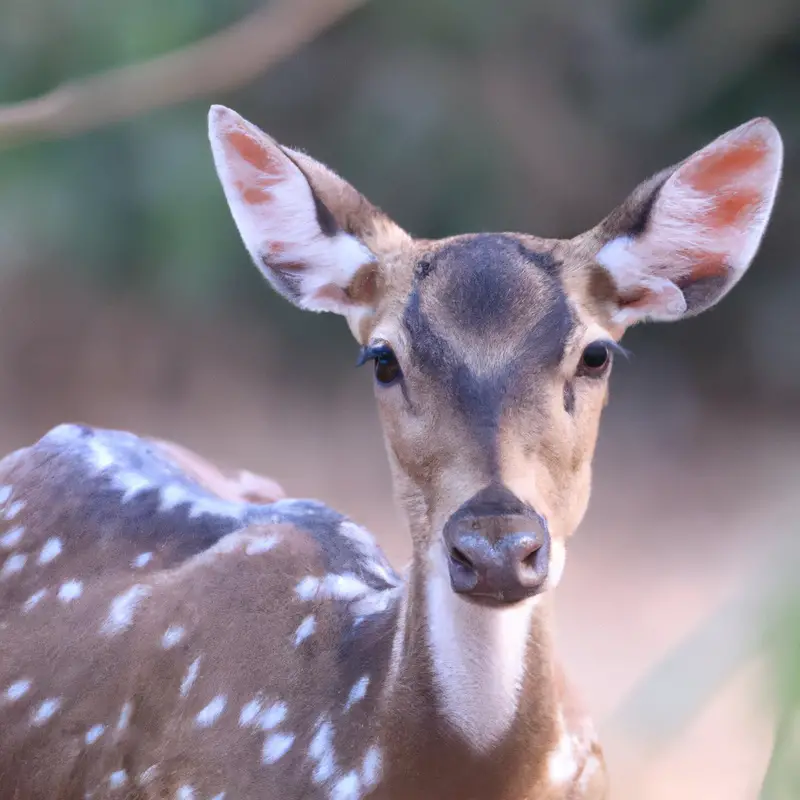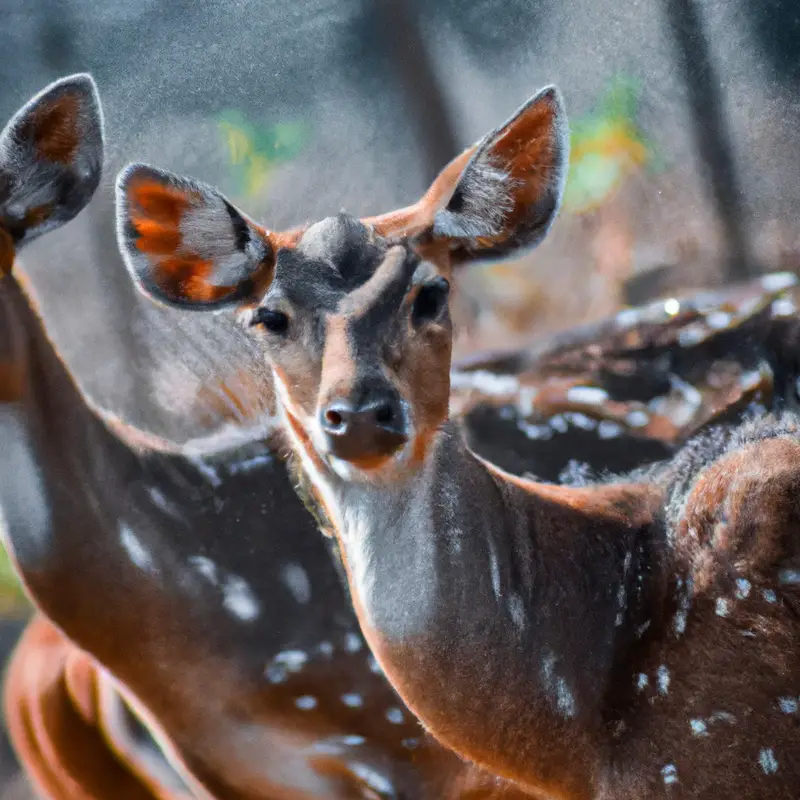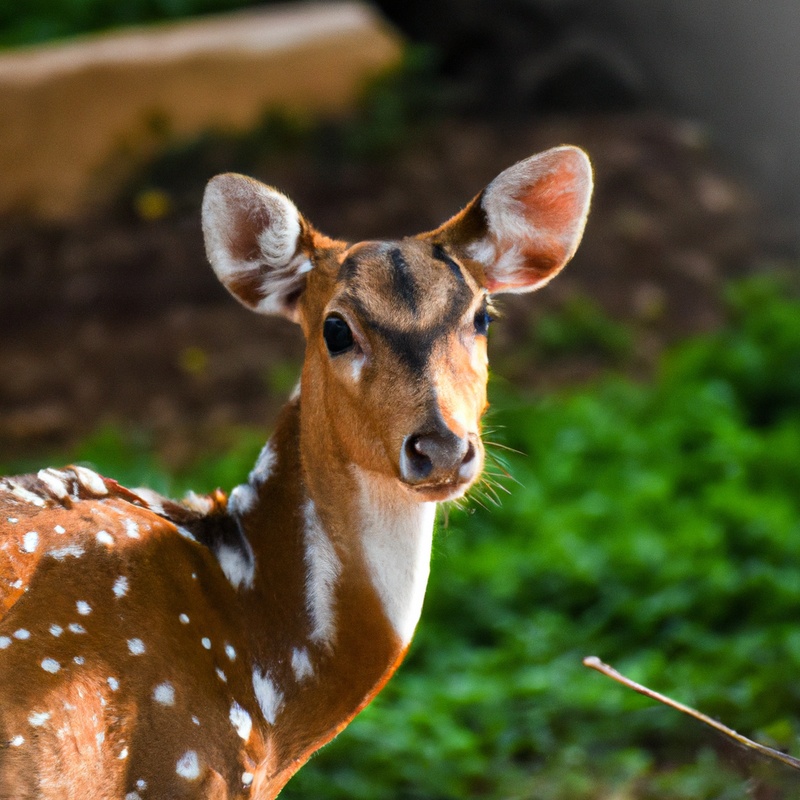Key Takeaways:
- Deer hunting is a popular recreational activity in Connecticut.
- Connecticut has strict regulations in place to manage the deer population.
- Hunting season in Connecticut typically runs from September to January.
- Hunters must obtain necessary permits and follow specific hunting rules and restrictions.
Are you ready to embark on an exhilarating hunting adventure in the beautiful state of Connecticut? Well, look no further! As an experienced hunter and nature enthusiast, I’m here to guide you through the ins and outs of deer hunting in the Constitution State.
From understanding the hunting regulations and permit requirements to mastering effective hunting techniques, tracking, and field dressing, I’ve got you covered.
Join me as we delve into the ethics of hunting, learn the art of processing and cooking your harvest, and explore some frequently asked questions. So, grab your gear, sharpen your senses, and let’s dive into the thrilling world of hunting deer in Connecticut!
Pros | Cons | |
Availability | Abundant deer population | Restricted hunting seasons |
Experience | Challenging and exciting | Requires knowledge and skills |
Meat Quality | Delicious lean meat | Requires processing |
Ecological Balance | Helps manage deer overpopulation | Potential impact on other wildlife |
Regulations | Strict regulations for safety and conservation | Limited hunting areas in heavily populated regions |
Hunting Regulations in Connecticut
License and Permit Requirements
License and permit requirements for hunting deer in Connecticut are important to ensure responsible and regulated hunting. To hunt deer in Connecticut, you must obtain a hunting license and a deer hunting permit.
The hunting license is issued by the Department of Energy and Environmental Protection (DEEP) and is valid for one calendar year.
The deer hunting permit is available through a lottery system, and hunters must apply for it annually. Additionally, hunters must complete a Hunter Safety Course and adhere to all state hunting regulations to maintain their license and permit eligibility.
Bag Limits and Season Dates
Bag limits and season dates for deer hunting in Connecticut are regulated by the Connecticut Department of Energy and Environmental Protection (DEEP).
For the 2021 deer hunting season, the bag limit for archery and firearms hunters is two deer per season, only one of which may be a legal buck.
The season dates vary depending on the hunting method.
Archery season typically begins in mid-September and ends in late January.
Firearms season usually starts in early November and concludes in mid-December.
It’s important to check the DEEP website for the most up-to-date and specific bag limits and season dates before heading out to hunt.
Weapon Restrictions and Safety Measures
Weapon Restrictions and Safety Measures in Connecticut: In Connecticut, there are specific regulations in place to ensure the safe and responsible use of weapons during hunting seasons. It is essential to adhere to these restrictions to promote safety and protect wildlife populations.
Here are some key points to remember:
- Firearm Restrictions: Connecticut has specific rules regarding the type of firearm that can be used for hunting deer. Only shotguns, muzzleloaders, and handguns with specific ammunition are allowed.
- Minimum Caliber Requirements: The state also imposes minimum caliber requirements for firearms used in deer hunting to ensure ethical and humane kills. Make sure your firearm meets the required caliber.
- Archery Equipment: If you prefer bowhunting, Connecticut allows the use of compound bows, recurve bows, and crossbows during specific hunting seasons. However, crossbows may have additional restrictions, so make sure to check the regulations.
- Hunter Safety Courses: Before obtaining a hunting license in Connecticut, you must complete an approved hunter safety course. These courses provide valuable information on firearm safety, proper handling, and ethical hunting practices.
- Orange Requirement: Wearing fluorescent orange during hunting seasons is mandatory in Connecticut. This safety measure helps to distinguish hunters from game animals and reduces the risk of accidental shootings.
- Tree Stand Safety: If you choose to hunt from a tree stand, it is crucial to follow safety guidelines. Use a reliable harness, maintain your stand properly, and always practice proper tree stand safety techniques to prevent falls and injuries.

Preparing for the Hunt
Scouting and Locating Deer
Scouting and locating deer is key to a successful hunt.
Start by studying maps and aerial images to identify potential deer habitats.
Look for food sources like acorns, agricultural fields, and thick vegetation.
Get out in the field and search for signs like tracks, droppings, and rubs.
Set up trail cameras to monitor deer activity and patterns.
Glass open fields and edges of cover during the early morning and late evening.
Pay attention to wind direction and scent control.
Stay patient and observant to increase your chances of finding deer.

Choosing the Right Gear
To choose the right gear for deer hunting in Connecticut, start with a reliable firearm or bow. Opt for a weapon that you’re comfortable and confident using.
Additionally, invest in clothing and accessories suitable for the specific season and weather conditions.
Quality camouflage, waterproof boots, and scent-blocking sprays are essential. Don’t forget a durable backpack to carry all your gear, as well as a quality knife and game bags for field dressing.
Lastly, pack essential items like binoculars, a range finder, and a flashlight.
Planning the Hunt
Planning the hunt is an essential part of a successful deer hunting experience.
Here are a few key steps to help you prepare:
- Research the regulations: Check the hunting regulations specific to your area to understand season dates, bag limits, and any special requirements or restrictions.
- Scout the location: Spend time familiarizing yourself with the hunting area. Look for signs of deer activity, such as tracks, droppings, or bedding areas. This will help you identify potential hunting spots.
- Consider the weather: Pay attention to weather conditions, as they can greatly impact deer movement. Cold fronts, wind direction, and precipitation can all influence where and when deer are active.
- Create a hunting plan: Based on your scouting and knowledge of deer behavior, develop a plan for where you will hunt and how you will access the area. Consider factors like wind direction, visibility, and potential escape routes for the deer.
- Prepare your gear: Make a checklist of essential hunting gear, including your firearm or bow, ammunition or arrows, clothing, boots, and other accessories. Ensure everything is in working order and pack them accordingly.
- Practice shooting: Regularly practice shooting to improve your accuracy and confidence. This will help you make ethical and effective shots when the opportunity arises.
- Safety first: Prioritize safety at all times. Let someone know your hunting plans, wear appropriate blaze orange clothing, and always follow firearm safety rules.

Hunting Techniques
Setting up Tree Stands and Ground Blinds
Setting up Tree Stands and Ground Blinds:
- Choose the right location for your tree stand or ground blind. Look for areas with high deer activity, such as near food sources or along travel routes.
- Ensure your tree stand is securely attached to the tree. Use a safety harness to prevent accidents and always follow the manufacturer’s instructions.
- When setting up a ground blind, make sure it blends well with the surrounding environment. Use natural materials like branches and leaves to camouflage it.
- Be mindful of wind direction when setting up either a tree stand or ground blind. You want to position yourself downwind from where you expect deer to approach.
- Clear shooting lanes to give yourself a clear line of sight. Remove any branches or obstructions that may obstruct your view or interfere with your shot.
- Practice scent control. Avoid wearing heavily scented products and take measures to minimize your own scent. This will help prevent deer from detecting your presence.
- Finally, be patient and stay quiet. Hunting from tree stands or ground blinds requires stillness and silence. Wait for deer to come within range before taking your shot.
Remember, setting up tree stands and ground blinds effectively can greatly increase your chances of a successful deer hunt.
Happy hunting!
Still Hunting and Stalking
Still hunting and stalking are two common techniques used in deer hunting.
Still hunting involves moving slowly and quietly through the woods, pausing frequently to observe for any signs of deer.
This method requires patience and careful observation of the surroundings.
Stalking, on the other hand, involves actively tracking a deer by following its signs, such as tracks and droppings.
This technique requires knowledge of deer behavior and the ability to move silently and undetected.
Both techniques can be effective in different situations, and it ultimately depends on the hunter’s preference and the specific conditions of the hunting area.
Using Calls and Scents
Using calls and scents can be effective strategies for hunting deer in Connecticut. When it comes to calling, using a variety of grunt calls and bleat calls can help attract deer and bring them closer.
It’s important to sound natural and mimic the sounds of deer in the area.
When it comes to scents, using deer urine or doe estrus can help create a realistic presence in the hunting area. Remember to use wind direction to your advantage and strategically place scents to attract deer within range.
Tracking and Field Dressing
Blood Trailing Tactics
Blood trailing tactics are essential for successful deer hunting.
Start by visually inspecting the area where the shot was taken and looking for any signs of blood.
Use a good quality blood trailing light or UV light to enhance visibility.
Follow the blood trail cautiously, keeping an eye out for additional signs such as broken branches or disturbed vegetation.
Don’t rush and maintain a steady pace, occasionally marking the trail for reference.
Remember to stay focused and patient, as locating wounded game can take time and effort.
Proper Field Dressing Techniques
Proper field dressing techniques are essential for effectively processing your harvested deer.
Here are a few straightforward steps to follow:
- Start by placing the deer on its back and making a small incision in the skin around the anus.
- Carefully cut along the belly from the anus to the neck, avoiding puncturing any internal organs.
- Once the belly is open, remove the intestines, bladder, and other organs, being cautious not to rupture them.
- After removing the organs, rinse the cavity with clean water to remove any remaining debris or blood.
- Finally, allow the deer to cool down as quickly as possible by propping the chest open or hanging it in a cool, well-ventilated area.
Remember, these are just the basic steps.
It’s always best to consult a knowledgeable hunter or field dressing guide for more detailed instructions specific to your region and hunting situation.
Transporting Your Harvest
Transporting your harvested deer is an important step in the hunting process.
Here are some key things to consider:
- Be prepared: Before heading out, make sure you have the necessary equipment to transport your deer safely. This may include a game cart, a backpack, or rope.
- Keep it cool: If possible, field dress your deer and hang it in a shaded area to cool down. This will help prevent spoilage and improve the quality of the meat.
- Properly secure the load: When transporting your deer, ensure that it is securely fastened to your vehicle or cart. This will prevent any accidents or damage during transport.
- Follow state regulations: Familiarize yourself with the specific rules and regulations regarding transporting harvested game in your state. This may include tagging requirements or restrictions on certain roadways.
Remember, always prioritize safety when transporting your harvest.
Take your time, pay attention to your surroundings, and enjoy the fruits of your successful hunt!
The Ethics of Deer Hunting
Fair Chase Principles
Fair chase principles are fundamental to ethical hunting practices.
These principles ensure that hunters give animals a fair chance to escape, promoting a sense of respect and sportsmanship.
One key principle is to refrain from using unfair advantages such as baiting animals or using high-powered technology.
Additionally, fair chase principles dictate the importance of hunting within legal seasons and areas, as well as respecting bag limits.
These principles help ensure that hunting remains a sustainable and ethical activity.
Respecting Wildlife and Private Property
Respecting Wildlife and Private Property is essential when hunting deer in Connecticut. Always remember to follow the laws and regulations regarding hunting seasons and bag limits.
It is important to treat wildlife with respect, taking only ethical shots and ensuring a clean kill.
Additionally, always obtain permission from landowners before hunting on private property. Be mindful of property boundaries and always practice safe and responsible hunting practices.
Ethical Shot Placement
Ethical shot placement in deer hunting is an important consideration.
When you take a shot at a deer, it’s crucial to aim for vitals like the heart and lungs to ensure a quick and humane kill.
This reduces the chance of the deer suffering unnecessarily.
Remember, a clean and ethical shot placement leads to more successful hunts and demonstrates respect for the animal.
Take your time, practice your aim, and always strive for responsible hunting practices.
Processing and Cooking Your Harvest
Field to Table: Butchering and Processing
Butchering and processing your harvested deer is a key step in the field to table journey.
Here’s what you need to know:
- Gather your tools: You’ll need a sharp knife, a bone saw, gloves, and a clean work surface.
- Begin with field dressing: Remove the internal organs to cool the meat quickly and avoid spoiling.
- Hang and skin the deer: Hang it by the hind legs and use a knife to carefully remove the hide.
- Quarter the deer: Use the bone saw to separate the deer into four parts: two hindquarters and two front shoulders.
- Break down the quarters: Trim away excess fat and connective tissue. Cut the muscles into manageable pieces for processing.
- Choose your cuts: Decide if you want steaks, roasts, ground meat, or sausage. Cut accordingly.
- Package and freeze: Place your processed meat in freezer-safe bags, removing as much air as possible, and label them with the date.
- Enjoy your hard-earned harvest: Cook and savor your delicious venison in a variety of recipes.
Remember, proper handling and cleanliness are crucial to ensuring the safety and quality of your meat.
Stay organized, take your time, and enjoy the rewarding process of field to table butchering and processing.
Delicious Deer Recipes
I have some mouthwatering deer recipes that you’ll love! Here are a few ideas:
- Grilled Venison Steak: Season the venison steak with salt, pepper, and your favorite herbs. Grill it to your desired level of doneness for a flavorful and juicy meal.
- Slow Cooker Venison Stew: Brown the venison in a pan, then transfer it to a slow cooker. Add vegetables like carrots, potatoes, and onions, along with beef broth and seasonings. Cook on low for 6-8 hours until the meat is tender and delicious.
- Venison Chili: In a large pot, cook ground venison with chopped onions and garlic until browned. Add tomatoes, kidney beans, chili powder, cumin, and paprika. Let it simmer for an hour or so, and you’ve got a hearty and spicy chili.
- Venison Sausage and Peppers: Slice venison sausage and sauté with colorful bell peppers and onions until tender. Serve it in a bun for a delicious and satisfying meal.
- Venison Stir-Fry: Slice venison into thin strips and stir-fry with your favorite vegetables like broccoli, bell peppers, and snap peas. Add soy sauce and ginger for a flavorful Asian-inspired dish.
These recipes are a great way to enjoy the rich and savory taste of deer meat.
Give them a try and savor the deliciousness!
Proper Handling and Storage
Proper handling and storage of your harvest is essential to ensure the meat stays fresh and safe to eat.
Once you’ve field dressed the deer, cool it down as soon as possible to prevent spoilage.
Hang the deer in a cool, dry place, ideally at temperatures between 32°F to 45°F.
Make sure to remove the hide to allow for better air circulation.
If you’re unable to hang the deer, you can quarter it and store the meat in a cooler with ice.
Remember to keep the meat clean and well-sealed to avoid contamination.
Frequently Asked Questions (FAQs)
Can I hunt on public land in Connecticut?
Yes, you can hunt on public land in Connecticut.
The Connecticut Department of Energy and Environmental Protection (DEEP) manages various state forests, wildlife management areas, and other public lands where hunting is allowed.
You’ll need to obtain the necessary permits and follow the state’s hunting regulations.
Public land provides opportunities for hunting deer and other game species, so make sure to familiarize yourself with the specific rules and regulations for each area you plan to hunt.
Happy hunting!
What is the bag limit for deer in Connecticut?
In Connecticut, the bag limit for deer varies depending on the season and type of deer. During archery season, the bag limit is two deer, either sex.
During firearms season, the bag limit is one antlered deer, followed by a second antlered deer if a hunter has already taken one during archery season.
There is also a bonus antlerless deer permit available, which allows hunters to take one additional antlerless deer. It’s important to always check the current regulations and specific guidelines set by the Connecticut Department of Energy and Environmental Protection.
Can I use a rifle for deer hunting in Connecticut?
Sure, here’s a straightforward answer to the question “Can I use a rifle for deer hunting in Connecticut?”: Yes, you can use a rifle for deer hunting in Connecticut. The state laws allow the use of rifles for deer hunting, as long as they meet certain specifications.
It’s important to check the specific regulations and requirements set by the Connecticut Department of Energy and Environmental Protection (DEEP) to ensure compliance.
Safety measures and responsible hunting practices are always crucial when using a rifle for any type of hunting.
Final Verdict
Hunting deer in Connecticut requires hunters to adhere to specific regulations and licensing requirements. It is important to understand bag limits, season dates, and weapon restrictions to ensure a safe and ethical hunt.
Preparing for the hunt involves scouting, choosing the right gear, and planning accordingly.
Various hunting techniques, including using tree stands, still hunting, and calling, can increase the chances of a successful hunt. Tracking and field dressing techniques are essential skills for hunters, along with a commitment to ethical hunting practices.
Finally, processing and cooking your harvest allows for a delicious and sustainable field-to-table experience.
Overall, deer hunting in Connecticut offers a unique opportunity to connect with nature and enjoy the rewards of a successful hunt when done responsibly and ethically.








